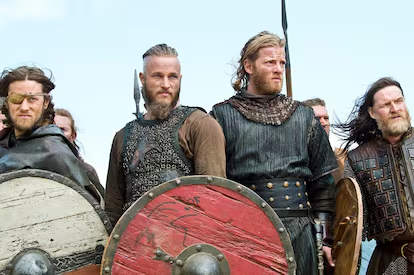Viking Age Weaponry: Tools of War from the North
When we talk about the Vikings (c. 793–1066 AD), we usually think of fierce raiders with horned helmets. The reality was different: their weapons were practical, effective, and adapted to both combat and everyday life.
 |
 |
 |
Check out our Viking Age products!
Swords: Status Symbol
Swords were a prestige item, as not everyone could afford them. They were expensive and often passed down through generations. They had double-edged blades measuring about 70–80 cm, a single guard, and decorated pommels. They were forged using the pattern welding technique, which combined strength and flexibility. Some swords included runes or inscriptions with symbolic or religious meanings.
Axes: The weapon of the people
Unlike swords, axes were accessible to almost everyone because they also served as tools. There were one-handed axes for labor and combat, and the imposing Dane axe, up to 1.5 m long, designed solely for war. Its heavy blade could split shields and pierce light armor.
Spears: The most common weapon
Spears were the most popular weapons because they were cheaper than swords and very versatile. There were long spears for close combat and short throwing spears. They were also strongly linked to the god Odin, which gave them a symbolic and religious component.
Shields: Defense and strategy
Viking shields were round, about 80–90 cm in diameter, made of wood and reinforced with iron in the center (umbo). They were used not only for protection, but also for thrusting, striking, and forming defensive walls, known as shield walls .
Viking Weaponry, don't miss it!
Bows and arrows: Distance as an advantage
Bows were made of yew, ash, or elm wood, while arrows had iron tips. They were essential for hunting, sieges, and landings, although they are less frequently mentioned in the sagas than other weapons.
Seax and knives
The seax was a long, single-edged knife, used in everyday life and combat. All free men usually carried one, regardless of their social position.
Armor and helmets
Helmets were made of iron, with nose guards, but never horns. Chain mail existed, although only the wealthiest could afford it. Most combatants probably protected themselves with padded or thick clothing that offered basic defense.
Viking weaponry wasn't fantastical or exaggerated, but practical, effective, and adapted to their world. The sword represented status, while the spear and axe were the true weapons of most. Their success in battle relied on a combination of mobility, tactics, and weapons designed for survival. Don't miss our Viking Articles!









